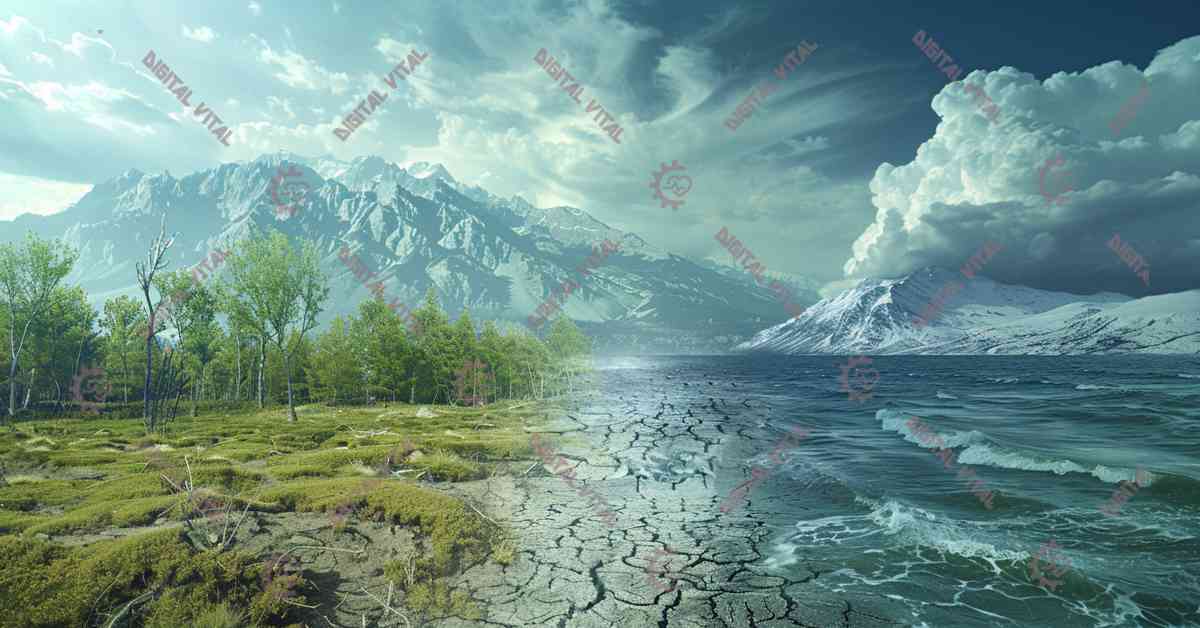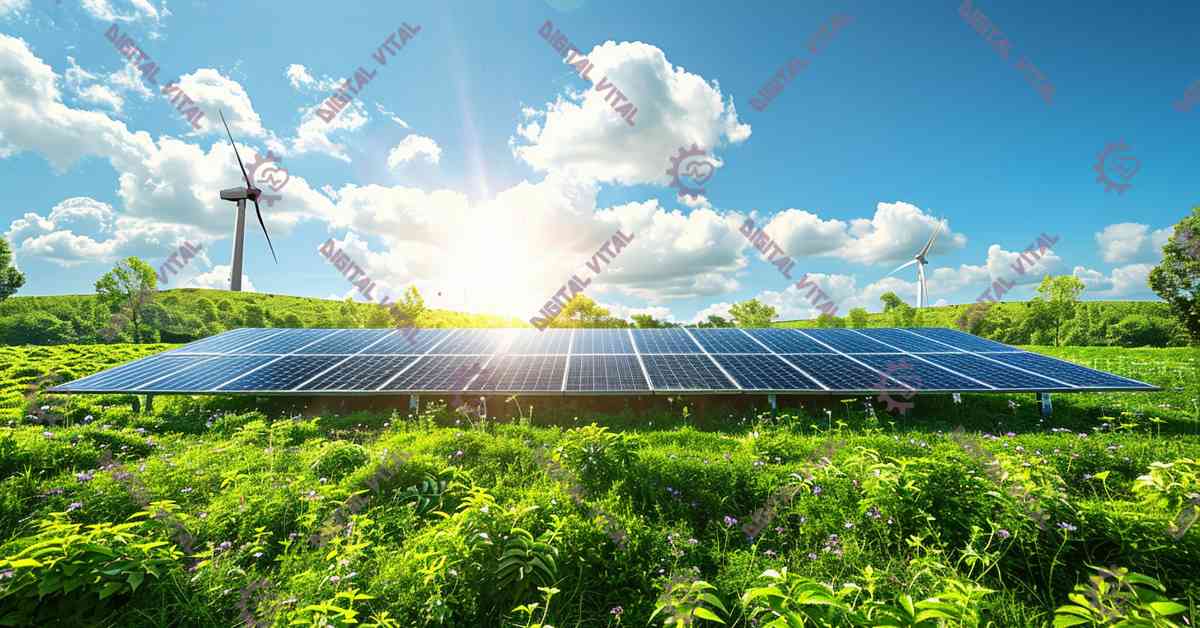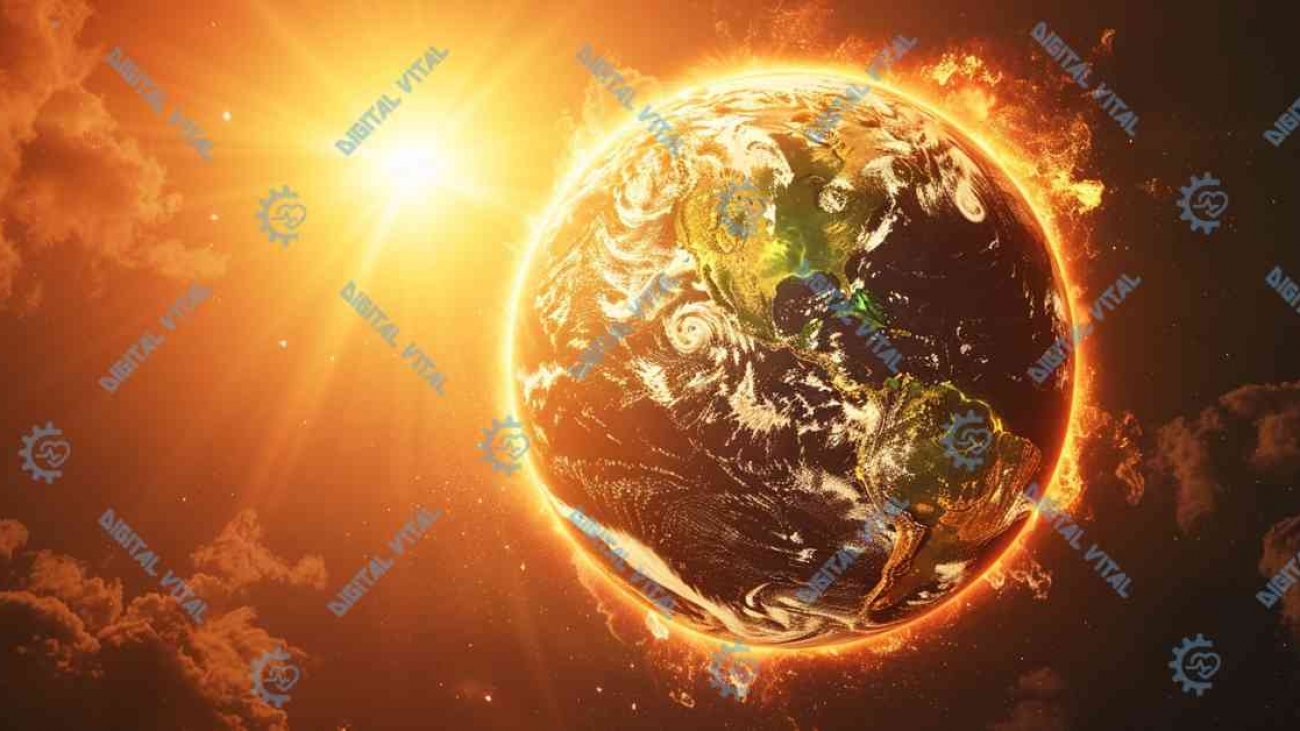The greenhouse effect is a natural process that warms the Earth’s surface. However, human activities have intensified this effect, leading to significant changes in our climate and environment. Understanding the effects of the greenhouse effect is crucial for developing strategies to mitigate its impact and adapt to the changes it brings.
Keywords: effects of greenhouse effect, climate change, global warming, greenhouse gases, environmental impact, carbon dioxide, methane, climate mitigation, climate adaptation, ecological changes
Table of Contents
The Science Behind the Greenhouse Effect
The greenhouse effect occurs when certain gases in the Earth’s atmosphere trap heat from the sun, preventing it from escaping back into space. This trapped heat helps to maintain the Earth’s temperature at a level suitable for life. The primary greenhouse gases responsible for this effect are carbon dioxide (CO2), methane (CH4), nitrous oxide (N2O), and fluorinated gases.
The natural greenhouse effect is essential for life on Earth, maintaining an average global temperature of about 15°C (59°F). Without it, the planet would be too cold for most forms of life to survive. However, human activities, particularly the burning of fossil fuels and deforestation, have increased the concentration of greenhouse gases in the atmosphere, enhancing the greenhouse effect. This enhanced greenhouse effect is the main driver of global warming and climate change.
Each greenhouse gas has a different capacity to trap heat. CO2, produced primarily from burning fossil fuels and deforestation, is the most significant due to its abundance. Methane, emitted from agriculture, livestock, and landfills, is much more effective at trapping heat but is present in smaller quantities. Nitrous oxide, from agricultural and industrial activities, and fluorinated gases, from industrial processes, also contribute to the enhanced greenhouse effect.
Effects of the Greenhouse Effect on Climate
The increased concentration of greenhouse gases has led to a rise in global temperatures, commonly referred to as global warming. This warming has far-reaching impacts on the Earth’s climate system.
Global temperatures have increased by approximately 1.1°C since the late 19th century, with the past decade being the warmest on record. This rise in temperature affects weather patterns, leading to more extreme weather events such as heatwaves, storms, and heavy rainfall. According to the Intergovernmental Panel on Climate Change (IPCC), these temperature increases are projected to continue, with potentially catastrophic consequences if greenhouse gas emissions are not significantly reduced.
One of the most visible effects of the greenhouse effect is the melting of ice caps and glaciers. The Arctic is warming at more than twice the global average rate, leading to significant ice loss. This not only contributes to rising sea levels but also impacts polar ecosystems and communities that depend on ice for their way of life. The Greenland ice sheet, for instance, is losing ice at an accelerating rate, contributing significantly to global sea level rise. If the entire Greenland ice sheet were to melt, it would raise sea levels by about 7 meters (23 feet), inundating coastal cities and displacing millions of people.
As glaciers and ice caps melt, the water released contributes to rising sea levels. Additionally, the thermal expansion of seawater as it warms also contributes to sea level rise. Rising sea levels pose a significant threat to coastal regions around the world. Low-lying areas and small island nations are particularly vulnerable, facing increased risks of flooding, erosion, and storm surges. These changes can lead to the displacement of communities, loss of property and infrastructure, and disruptions to local economies.
Environmental Impacts of the Greenhouse Effect
The effects of the greenhouse effect extend beyond climate and weather patterns, profoundly impacting various ecosystems and biodiversity.

Ocean Acidification
Increased levels of CO2 in the atmosphere not only contribute to global warming but also lead to ocean acidification. When CO2 is absorbed by seawater, it reacts to form carbonic acid, which lowers the pH of the ocean. This change in acidity can have detrimental effects on marine life, particularly organisms with calcium carbonate shells or skeletons, such as corals, mollusks, and some plankton species.
Coral reefs, often referred to as the “rainforests of the sea,” are particularly vulnerable to ocean acidification. The increased acidity weakens coral skeletons, making them more susceptible to damage from storms and other stressors. Additionally, acidification can interfere with the ability of corals to produce their skeletons, threatening the survival of these vital ecosystems. The decline of coral reefs can have cascading effects on marine biodiversity, as they provide habitat and food for numerous species.
Disruption of Ecosystems
The greenhouse effect also leads to shifts in ecosystems and changes in species distribution. As temperatures rise, many species are forced to migrate to more suitable habitats, often towards higher altitudes or latitudes. However, not all species can adapt quickly enough or find suitable habitats, leading to declines in populations and, in some cases, extinction.
Terrestrial ecosystems are experiencing significant changes due to climate shifts. Forests, for example, are facing increased risks from pests, diseases, and wildfires, all exacerbated by higher temperatures. Boreal forests, which are adapted to cold climates, are particularly vulnerable. The encroachment of pests like the mountain pine beetle, which thrives in warmer conditions, has led to widespread tree mortality in regions such as North America.
Aquatic ecosystems are also being affected. Warmer water temperatures can alter the distribution of fish and other aquatic species, disrupting food webs and affecting commercial fisheries. Changes in precipitation patterns and the melting of glaciers can impact freshwater systems, reducing the availability of water for drinking, agriculture, and industrial use.
Impact on Agriculture
The greenhouse effect poses significant challenges to agriculture, threatening food security and livelihoods. Changes in temperature and precipitation patterns can affect crop yields, soil fertility, and water availability. Extreme weather events, such as droughts and floods, can devastate crops and reduce agricultural productivity.
Some regions may experience longer growing seasons and increased agricultural potential due to warmer temperatures. However, these benefits are often offset by the negative impacts of heat stress, water scarcity, and the increased prevalence of pests and diseases. For example, crops such as wheat, maize, and rice, which are staple foods for millions of people, are highly sensitive to temperature changes and can suffer reduced yields under heat stress.
Smallholder farmers in developing countries are particularly vulnerable to the impacts of the greenhouse effect. They often lack the resources and infrastructure to adapt to changing conditions, making them more susceptible to crop failures and food insecurity. Developing and implementing climate-resilient agricultural practices, such as drought-resistant crops and sustainable water management, is essential to support these communities.
Health Impacts of the Greenhouse Effect
The enhanced greenhouse effect also has direct and indirect impacts on human health. Rising temperatures and changing weather patterns can exacerbate existing health problems and create new health risks.
Heat-Related Illnesses
One of the most immediate health impacts of the greenhouse effect is the increase in heat-related illnesses and deaths. Prolonged exposure to high temperatures can lead to heat exhaustion, heatstroke, and other heat-related conditions. Vulnerable populations, such as the elderly, children, and individuals with pre-existing health conditions, are at greater risk.
Heatwaves, which are becoming more frequent and severe due to global warming, can have devastating effects on public health. The 2003 European heatwave, for example, resulted in over 70,000 excess deaths across the continent. Urban areas, with their dense populations and heat-absorbing infrastructure, are particularly susceptible to the “urban heat island” effect, where temperatures are significantly higher than in surrounding rural areas.
Respiratory and Cardiovascular Diseases
Air pollution, which is exacerbated by the burning of fossil fuels, is another major health concern linked to the greenhouse effect. Pollutants such as ground-level ozone, particulate matter, and nitrogen dioxide can aggravate respiratory and cardiovascular diseases. Increased temperatures can also enhance the formation of ground-level ozone, worsening air quality and posing additional health risks.
Individuals with asthma, chronic obstructive pulmonary disease (COPD), and other respiratory conditions are particularly vulnerable to the effects of air pollution. Long-term exposure to polluted air can lead to chronic health issues and reduced life expectancy. Efforts to reduce greenhouse gas emissions can also help to improve air quality and public health outcomes.
Spread of Infectious Diseases
The greenhouse effect can influence the spread of infectious diseases by altering the habitats and behaviors of disease vectors, such as mosquitoes and ticks. Warmer temperatures and changing precipitation patterns can expand the range of these vectors, increasing the risk of diseases such as malaria, dengue fever, and Lyme disease.
For example, malaria, which is transmitted by Anopheles mosquitoes, is typically confined to tropical and subtropical regions. However, as temperatures rise, these mosquitoes can survive and reproduce in higher altitudes and latitudes, potentially exposing new populations to the disease. Similarly, ticks that carry Lyme disease are expanding their range into previously unaffected areas, increasing the incidence of the disease.
Public health systems must adapt to these changing conditions by enhancing disease surveillance, improving healthcare infrastructure, and promoting preventive measures such as vaccination and vector control.
Economic and Social Impacts
The effects of the greenhouse effect extend to economic and social dimensions, influencing livelihoods, infrastructure, and social stability.
Economic Costs
The economic costs of climate change are substantial and are expected to rise as the impacts of the greenhouse effect become more pronounced. Damage to infrastructure, reduced agricultural productivity, increased healthcare costs, and loss of biodiversity all contribute to the economic burden of climate change.
Extreme weather events, such as hurricanes, floods, and droughts, can cause significant economic losses. For instance, Hurricane Katrina, which struck the Gulf Coast of the United States in 2005, resulted in over $160 billion in damages and had long-lasting economic and social repercussions. Insurance costs are also rising as the frequency and severity of climate-related disasters increase.
Investing in climate mitigation and adaptation measures can help to reduce these economic costs. Renewable energy,
energy efficiency, and sustainable land management practices can create economic opportunities, reduce dependence on fossil fuels, and build resilience to climate impacts.
Social Inequality
The greenhouse effect exacerbates social inequalities, as vulnerable populations are often the most affected by climate change. Low-income communities, indigenous peoples, and marginalized groups may lack the resources and infrastructure to cope with the impacts of climate change, making them more susceptible to displacement, food insecurity, and health problems.
Climate change can also lead to conflicts over resources, such as water and arable land, further exacerbating social tensions and instability. For example, prolonged droughts in regions such as the Sahel in Africa have contributed to food and water shortages, displacement, and conflicts among communities.
Addressing the social dimensions of climate change requires inclusive and equitable approaches that prioritize the needs and rights of vulnerable populations. This includes providing access to education, healthcare, and sustainable livelihoods, as well as ensuring meaningful participation in decision-making processes.
Mitigation and Adaptation Strategies

Addressing the effects of the greenhouse effect requires a combination of mitigation and adaptation strategies to reduce greenhouse gas emissions and enhance resilience to climate impacts.
Mitigation Strategies
Mitigation strategies aim to reduce the sources or enhance the sinks of greenhouse gases. Key mitigation strategies include:
- Transitioning to Renewable Energy: Replacing fossil fuels with renewable energy sources, such as solar, wind, and hydropower, can significantly reduce greenhouse gas emissions. Investing in energy storage and grid infrastructure is essential to support the large-scale deployment of renewables.
- Improving Energy Efficiency: Enhancing energy efficiency in buildings, transportation, and industry can reduce energy consumption and emissions. This includes adopting energy-efficient technologies, retrofitting existing infrastructure, and promoting sustainable practices.
- Carbon Capture and Storage (CCS): CCS technologies capture CO2 emissions from industrial processes and power plants and store them underground to prevent them from entering the atmosphere. Research and development are needed to improve the efficiency and cost-effectiveness of these technologies.
- Sustainable Land Use and Forestry: Protecting and restoring forests, wetlands, and other ecosystems can enhance their capacity to sequester carbon. Sustainable agricultural practices, such as agroforestry and conservation tillage, can also reduce emissions and enhance soil health.
Adaptation Strategies
Adaptation strategies aim to enhance the resilience of communities, ecosystems, and economies to the impacts of climate change. Key adaptation strategies include:
- Developing Climate-Resilient Infrastructure: Investing in infrastructure that can withstand extreme weather events, such as flood defenses, resilient buildings, and transportation networks, is essential to reduce vulnerability to climate impacts.
- Enhancing Water Management: Sustainable water management practices, such as efficient irrigation, rainwater harvesting, and groundwater recharge, can help to address water scarcity and ensure a reliable water supply.
- Promoting Climate-Smart Agriculture: Implementing climate-smart agricultural practices, such as crop diversification, improved irrigation, and soil conservation, can enhance food security and resilience to climate impacts.
- Strengthening Public Health Systems: Enhancing healthcare infrastructure, disease surveillance, and preventive measures can help to protect public health from the effects of the greenhouse effect.
- Supporting Community-Based Adaptation: Engaging local communities in adaptation planning and implementation ensures that strategies are context-specific and address the unique needs and priorities of different populations.
Conclusion
The greenhouse effect, intensified by human activities, has profound impacts on our climate, environment, health, economy, and society. Understanding these effects is crucial for developing effective mitigation and adaptation strategies to address the challenges posed by climate change.
For small businesses, employees, job seekers, and students interested in exploring the potential of climate action, DigitalVital offers comprehensive services to help you navigate and thrive in this evolving landscape. Whether you need a CV review, publishing support, or specialized further education, we are here to assist you.
Visit DigitalVital Hub to learn more about our consultancy services, and stay ahead of the curve by integrating sustainable practices into your professional toolkit. Explore other articles on our platform to stay updated on the latest climate change trends and insights.
By embracing the opportunities for climate action and addressing the challenges head-on, we can make significant strides towards a sustainable and resilient future. Join us in the global effort to combat the effects of the greenhouse effect and ensure a healthy planet for future generations.

